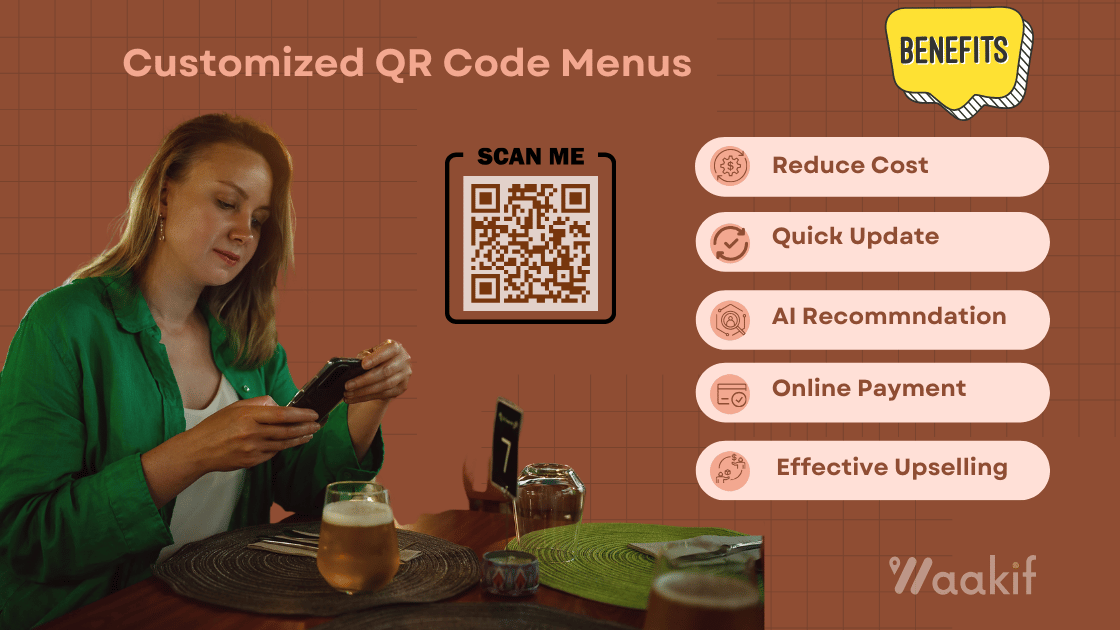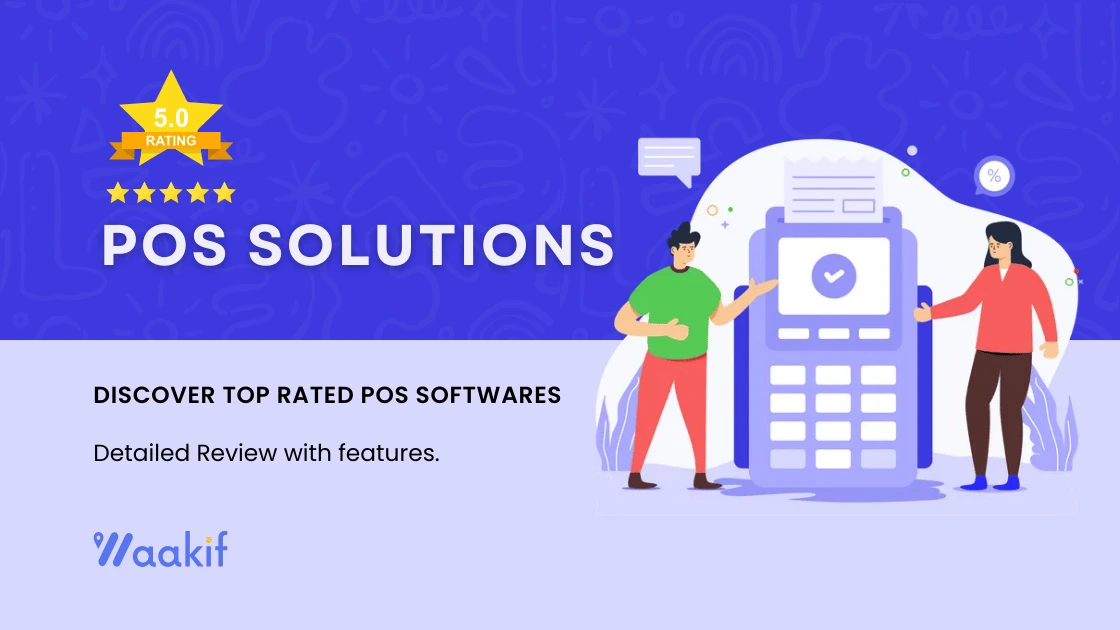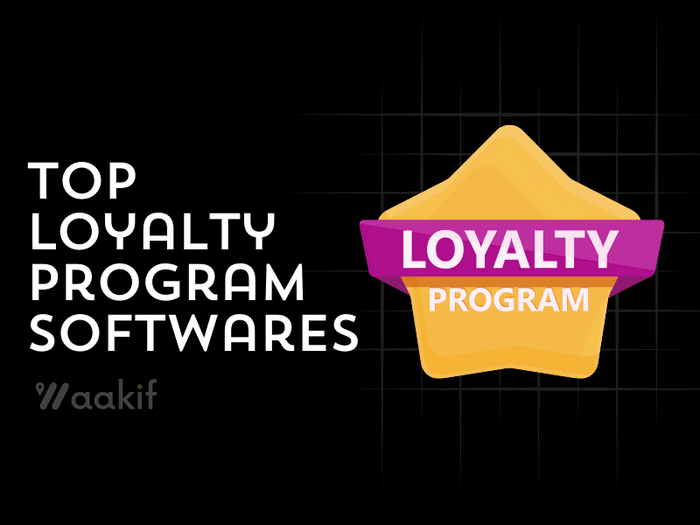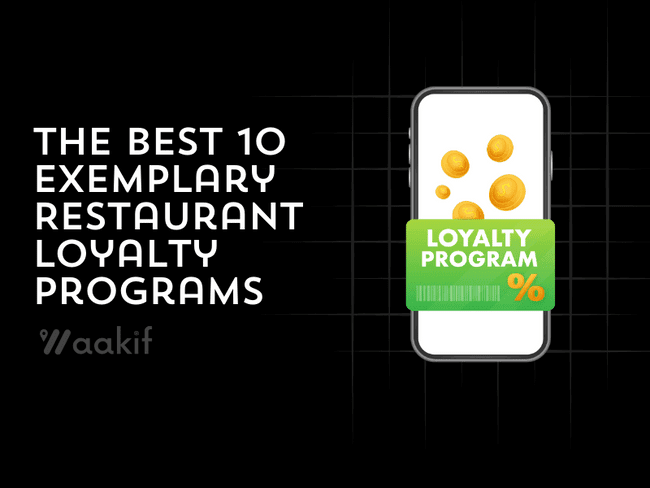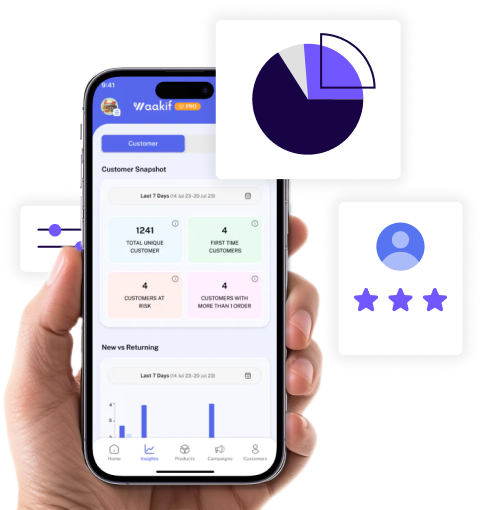Imagine your restaurant business plan to be your ultimate road map, outlining for investors, stakeholders, and business owners how you intend to realize your idea. It guarantees that nothing is missed as your restaurant expands. Your business plan will help you stay focused and on course even while you’re placed in the thicket of problems like staffing, construction, licensing, and other issues. It is far more difficult to navigate the complicated world of running a restaurant without one.
Attracting investors also requires a strong company plan. Most recently opened eateries require funding from silent partners or investors in the hospitality industry. They need to know you have a well-thought-out plan for success before they invest in your ambition. Investors can see from your business plan that you’ve thought of every expense and scenario. It gives a thorough explanation of your plan, demonstrates the qualifications and expertise of your management group, and shows why you believe it will be successful.
“Whether it is a new or established company, everyone needs a business plan. When you wander from your goals, business plans can help you get towards track by keeping you focused on your objectives”.
As you craft your restaurant business plan, also explore our guide on how to start a cloud kitchen business for a modern approach to food service.
Steps to a Comprehensive Restaurant Business Plan
A thorough business strategy must be developed by following several important steps:
- Describe Your Goals and Mission: Clearly state the target market, the restaurant’s values, and its mission. What distinguishes your eatery from others?
- Carry out market research: Examine market trends, the market for target products demographics, and the competitive environment.
- Create a marketing strategy that outlines your approach to using advertising, branding, and promotional efforts to draw in and keep customers.
- Create Operational Procedures: Specify how food is prepared, how services are rendered, how employees are staffed, and how inventory is managed.
Executive Summary
Start your business plan for your restaurant with a quick summary. Introducing and summarising your complete concept, this part aims to draw the reader in. Investors should be compelled to read more and have faith in your proposal.
The goal statement of your restaurant, the suggested concept, the plan’s execution strategy, a summary of possible expenses, and the projected return on investment are important components to include.
Include a write-up about your management team as well, highlighting their qualifications and prior experiences to show that they can successfully run a business.
While drafting your restaurant business plan, you might also be interested in understanding culinary details such as what is maki to enrich your menu offerings.
Key objectives and goals
- Increase consumer satisfaction: Happy patrons were more likely to come back, which can contribute to the restaurant’s long-term viability. This may involve upholding optimal standards for food safety and offering high-quality meal service.
- Examine a cost-focused approach: If raising pricing won’t draw in more business, consider lowering prices to draw in clients while keeping operational costs down and profit margins intact.
- Analyse the sale: You can learn more about the effects of promotional efforts and make quicker decisions if you routinely monitor daily sales.
Summary of the financial outlook
It is anticipated that the food service and foodservice sector would add 200,000 jobs by 2025, bringing the total number of employed people in the sector to 15.7 million. The business is expected to create 150,000 jobs a year on average during 2024 and 2032, with 16.9 million people employed globally by that time.
Company Description
Mission Statement: Defining your restaurant’s purpose and values
The goal, vision, and values of a restaurant are crucial elements that influence how decisions are made and how the company is run as a whole. Despite their frequent interchangeability, these phrases have different meanings:
The task A restaurant
A restaurant’s mission statement outlines the establishment’s objectives, main principles, and purpose. It describes the restaurant’s operations, clientele, and points of differentiation from other eateries. A team’s objectives should be succinct, memorable, and act as a call to action.
Idea of Restaurants
A restaurant’s vision is a declaration of its long-term objectives and desires. It serves as a declaration of the restaurant’s goals and desired reputation. A restaurant’s vision statement should convey its goals and be both ambitious and motivating.
Also Read: 150+ Unique Restaurant Names Ideas List 2024
Dining Establishment Principles
The ideals of a restaurant serve as the pillars that mould its culture and methods of operation. They give an overview of the restaurant’s values and beliefs.
Business Structure: Legal structure, ownership details
There isn’t a single, optimal or ineffective method for organising a firm. Together, you and your lawyer will ascertain the best possible structure in light of your unique requirements, preferences, and situation. There are multiple main categories to select from:
Collaborations
Partnerships come in two flavors: limited and global.
A general partnership has several owners and functions similarly to a sole proprietorship. Like sole proprietors, general partners are subject to limitless personal liability.
Limited Partnership: The remaining members in the limited liability company may be limited partners, but there must be one general partner at all. There are two things to be aware of in this situation: a limited partner is not eligible to participate actively in the management of the restaurant business and is not eligible to receive compensation. Beyond the money they invested, they are not personally liable for the company’s debts.
One-person business
The most basic arrangement is in which a single individual owns and runs the company. There is no liability protection because the owner and the company are regarded as one and the same legal entity. Since the proprietor works for himself, they must file quarterly income taxes with the IRS.
Location and Facilities: Choosing the right location
The following factors can be taken into account while picking a restaurant location:
- Access: It should be easy to see the restaurant’s front.
- Accessibility: It should be simple for patrons to locate the eatery.
- Safety: Make sure the neighbourhood is safe by doing some research on it.
- Foot Traffic: There should be a lot of foot movement in the neighbourhood.
- Competitors: The number of rival companies in the area should be minimal.
- Parking: Sufficient spaces should be available for parking.
- Space: There should be adequate room for work in the restaurant.
- Finances: Make an effort to locate the finest space at the most affordable expense.
Overview of the Properties
- Dining Area: Enough room to fit the intended number of seats while maintaining comfort.
- Kitchen: Sufficient room for preparing food, storing it, and housing appliances. For seamless operations, a kitchen plan must be effective.
- Restrooms: Compliant with municipal requirements, with enough facilities to accommodate the anticipated number of patrons.
- Interior Design: You should be able to change the room’s look and feel to suit your theme.
- External Appeal: A captivating facade has the power to attract clients.
Possibility of Expansion
Take into account whether there is space for future growth or the addition of amenities like a terrace for eating or an exclusive meeting place.
Unique Selling Proposition (USP)
What sets your restaurant apart? Basically, what sets your company apart from the competition is its unique selling offer. Your restaurant stands out from the competition due to a unique value that sets it apart from competitors. Although USPs might range greatly amongst businesses, the fundamental concept is always the same: providing something special to draw in and keep clients.
What Does a Restaurant Need a Unique Selling Point (USP)?
In the cutthroat eating industry of today, a restaurant’s USP is crucial. This is the reason:
- Separation: Your USP makes your restaurant stand out from the crowd and becomes the destination for a particular need.
- Loyalty: It cultivates recurring business and loyalty by creating emotional relationships with consumers.
- Selling Power: When you have a compelling USP, customers will value your unique offering more and you will be able to charge more for it.
- Successful Advertising: By giving consumers a compelling incentive to test your restaurant, it streamlines marketing initiatives.
- Acquiring Fresh Consumers: By making an impression, you will inevitably draw in new clients who are searching for a distinctive eating experience.
Market Analysis:
Industry Overview: Trends, market size, and growth projections
Your diner business plan should include three sections for market analysis: industry analysis, competitive analysis, and marketing analysis.
Analysis of the Industry
The following queries should be addressed in your industry study:
- Who is it that you want to draw in?
- What qualities will the patrons of your restaurant possess?
Owners will learn who your target market is in this part, along with the reasons they might pick your restaurant over competitors.
Analysis of Rivalry
While it’s easy to assume that everyone will visit your restaurant, examining other companies is necessary to make this a reality. Which eateries in your target area are already well-liked?
Make a note of items like their menu style, hours of operation, prices, and appearance. Next, make sure that investors understand from this section what sets your restaurant apart from the competitors.
Analysis in Advertising
Investors will be interested in learning how you plan to advertise your business. How will your advertising be unique from the competition? How are you going to draw in your intended clientele? What unique offers are you going to make? All of this is basically a marketing strategy.
This kind of breakdown of the market data enables you to stand out in a competitive restaurant market and gives investors insight into your promotional strategy.
Target Market: Identifying and Describing Your Target Audience
Those that are likely to purchase from the menu at your restaurant make up your target market. Specifically, the kind of patrons you hope to get into your eatery is what we mean when we discuss a target audience.
To determine who frequents a restaurant, you need to look at the following factors:
- Population: Include things like age, gender, locality, income, education, and religion.
- Psychological Factors: The shared beliefs, attitudes, and goals of a group of individuals.
- Behavior: In particular, the financial, digital, and hobby-related habits connected to restaurants.
Tips to Determine Who the Target Market Is for Your Restaurant
There are two primary approaches available to you for determining the target market for your restaurant, each with pros and cons:
- Employ an Agency: You may be as involved or as detached as you like. They can handle the work for you. The drawback is that they will be expensive, and you might not be able to afford them just for this.
- Doing It Yourself: Although it takes more work, the payoff is lower costs and you have a firsthand grasp of your audience’s motivations.
Competitive Analysis: Key Competitors and Your Strategies to Differentiate
Determine Who Your Rivals Are
- Direct Rivals: Local eateries in your neighborhood that provide comparable fare and customer service.
- Indirect Competitors: Restaurants that rival to attract the same target clientele but have distinct cuisines or service philosophies.
Generally Applicable Conversion Techniques
- Create an Authoritative Brand Voice: Use social media and marketing materials to share the story of your restaurant.
- Sustainability Practices: Stress the importance of ecologically friendly practices, such as waste minimization, eco-friendly packaging, and assistance for regional farmers.
- Culinary Innovation: To keep your menu interesting and new, stay ahead with culinary trends and constantly innovate it.
- Client Input: To continuously enhance the dining experience, actively seek out and address client feedback.
- Social Media Presence: Showcase your food, employees, and customer experiences by maintaining an active and engaging social media presence.
SWOT Analysis: Strengths, Weaknesses, Opportunities, and Threats
Explain a SWOT Analysis
Strengths, weaknesses, opportunities, and threats are initials for SWOT. To do this, a situational study of a restaurant’s operations must be conducted. It lets the restaurant’s management assess how the business is performing in the competitive industry.
A restaurant’s strengths and weaknesses are its internal variables that it can control. The restaurant cannot control external events that pose risks or opportunities. These elements have a significant effect on how a restaurant runs.
Enhance your restaurant business plan by incorporating effective customer retention strategies for restaurants to ensure long-term success.
What Is Your Strongest Ability?
Are you aware of the things that draw people to your restaurant or bar? Some of this may have become clear to you when you researched ways to improve patron happiness in restaurants. It’s what drew them in the first place and what keeps them returning.
This is a thorough SWOT analysis of a restaurant company:
- Strengths:
- Special dishes or specialties that distinguish your restaurant from rival establishments.
- Client Satisfaction: A group of devoted customers who come back often.
- Skilled chefs, attentive wait staff, and seasoned management comprise the experienced staff.
- Ambience and Environment: A welcoming and cozy eating space that enhances patron satisfaction.
- Innovative Marketing: The skillful application of marketing techniques, such as social media, to draw in and keep clients.
- Weaknesses:
- Restricted Menu Variety: A limited selection of items that might not appeal to a broad audience.
- High Operating Costs: High expenses for rent, utilities, salaries, and ingredients.
- Inconsistent Service Quality: Variability in service that may cause customer dissatisfaction.
- Dependency on Key Suppliers: The risk of supply disruptions due to reliance on a small number of suppliers for essential materials.
- Weak Online Presence: Low-quality social media and website content that lowers visibility and customer engagement.
- Opportunities:
- Market Expansion: Adding more stores or increasing takeaway and delivery options.
- Menu Diversification: Adding new items to the menu or accommodating special dietary requests like gluten-free, vegan, or keto alternatives.
- Technology Integration: Applying cutting-edge technology for online ordering, customer relationship management, and reservations.
- Specific Partnerships: Collaborating with nearby companies, vendors, or event planners to attract additional clients.
- Food Trends: Capitalizing on popular food trends, like plant-based diets, organic foods, and eco-friendly production methods.
- Threats:
- High Levels of Rivalry: Competition from other restaurants, notably chains and new entrants, affecting market share.
- Financial Downturns: Periods when consumers spend less on dining out.
- Supply Chain Problems: Disruptions affecting the price or availability of ingredients.
- Changing Customer Preferences: Modifications in customer preferences impacting demand for specific food types or dining establishments.
- Regulatory Changes: New regulations or health requirements increasing operating expenses or necessitating changes to business practices.
- Critical Reviews: Negative comments on review sites that could harm a brand’s reputation and deter potential customers.
Menu and Services
Menu Development: Highlighting key dishes, menu design, and pricing strategy
Food Planning
- Layout: Make use of a simple, clear layout. Since the eye naturally moves to the top right side of the menu, place high-margin products there.
- Descriptions: Write captivating descriptions that showcase unusual ingredients and cooking techniques. Make them appealing but succinct.
- Illustrations: Don’t overuse excellent photos. A menu with too many pictures may appear cluttered, but strategically placed pictures of the main courses can work wonders.
- Typefaces: Typefaces should be readable and clear. Use large or larger fonts to draw attention to the dish titles, but make sure the whole design stays consistent.
Important Recipes
- Signature Dishes: List and emphasize foods that are distinctive or well-known. These turn into the centerpiece of your marketing and menu.
- Seasonal Specials: To keep the menu interesting and entice customers to return, rotate meals based on what’s in season.
- Popular Items: Make sure the most well-liked dishes are clearly shown by using sales data to identify which ones are.
- Nutrition Options: To reach a larger audience, provide vegan, vegetarian, gluten-free, and other dietary-friendly options.
Pricing Strategy
Several important factors need to be taken into account when creating an effective pricing method for a restaurant:
- Recognize Costs:
- Fixed Costs: Salary, utilities, and rent.
- Variable Costs: Labour, materials, and usage-based utilities.
- Overhead Expenses: Marketing, insurance, and upkeep.
- Competitive Analysis: Examine costs at neighboring eateries that serve comparable cuisines. Determine any market gaps or distinctive value offerings.
- Engineering Menus: Sort the following items into groups:
- Dogs: Low revenue, low popularity
- Plowhorses: Poor profit, high popularity
- Stars: High profit, high popularity
- Riddles: High profit, low popularity
- Pay attention to marketing and pricing optimization for puzzles and stars.
- Discounts and Promotions: Use discounts, advertisements, and loyalty schemes to draw in and keep clients without compromising long-term financial success.
- Technology and Automation: Use restaurant management software to make better pricing decisions, manage earnings, stock, and customer preferences.
Types of Food Service Styles
Here are a few of the most typical food service styles:
- Plated Service: Food is prepared in advance and plated in the kitchen before being served to guests. This style is the most popular in restaurants.
- Banquet Service: A range of foods are arranged on a table and counter for guests to help themselves from. This style is frequently used for large parties or events.
- House Style Service: Generous servings of food are set out on the table for guests to help themselves, similar to a family dinner.
Various Food Service Style Types
- Diamond Service: This form of serving involves presenting and transferring meals to the guest’s plate from the left side using a fork and service spoon, while drinks arrive from the right side. It’s recognized as an official ceremony and is also known as English service. When delivering food, the server rotates counter-clockwise. Luxurious restaurants employ this type of service.
- US Service Style: This version of the service approach is straightforward and informal, also known as “plated service.” Food is plated neatly in the kitchen and arranged at the guest’s cover starting on the right side.
Marketing and Sales Strategy
Branding: Creating a Compelling Brand Identity
How is Branding for Restaurants?
The brand’s visual appearance that conveys your restaurant’s values, mission, in-person or online experience, and customer relationships is known as restaurant branding. The company logo, colours, typeface, table fashion, and other visual components are all part of restaurant branding. This is influenced by everything, including the ambience of your restaurant and the information on the website and your online accounts. When you have a carefully considered and developed brand identity, you can effectively engage with your target audience.
While developing your restaurant business plan, consider reviewing our comprehensive restaurant name ideas list to find the perfect name for your new venture.
Some Advice for Effective Restaurant Branding
- Stay Consistent: It takes time. It doesn’t imply you’ll suddenly become the most well-known restaurant overnight just because you completed all the requirements for restaurant branding and put all of your design elements into practice. Everything requires time. You will need to put in a lot of effort into marketing your company, providing the greatest customer service, and earning people’s trust.
- Maintain Coherence: The key to restaurant branding is consistency. You’ve worked hard to craft the image that most effectively captures your company; don’t sabotage it by haphazardly altering your tone of voice or color scheme to suit a fad. To make sure your corporate identity is consistent, review your brand book each time you make a modification, add a new article, interact with the media, or launch a new email advertising effort.
- Don’t Complicate Things: Via your restaurant’s branding, you must convey a clear and concise message to prospective patrons. Refrain from hiding behind endless teases. Make sure people know exactly what your business stands for before asking for their support. To help customers recognize your company, post a mission or distinctive value proposition on your website, in social media posts, and in certain marketing initiatives.
Marketing Channels: Digital Marketing, Traditional Media, Partnerships, and Promotions
Channels of the Marketing Field Business Plan for Restaurants
- The Web: Post high-quality images of dishes, behind-the-scenes videos, client testimonials, and forthcoming events on sites like Facebook, Instagram, and TikTok. Facebook advertisements and Instagram Stories are particularly useful for reaching local audiences.
- Reviews: Interact with websites such as TripAdvisor, Yelp, and Google My Business to read online reviews and listings. Urge pleased clients to respond to negative as well as positive feedback and to write good evaluations.
- Particular Offers: Hold one-time events like happy hours, “buy one get one free” sales, or discounts on particular days. Reward recurring business through loyalty programs to increase client retention.
- Seasonal Promotions: Design unique menus or deals in honor of occasions such as New Year’s Eve, Mother’s Day, and Valentine’s Day. For bigger gatherings or holiday celebrations, think about providing catering services.
- Promotions and Competitions: Hold social media competitions where participants can like, share, or tag friends to enter to win a complimentary meal or gift cards. Your online presence and interaction may rise as a result.
- Paid Advertising: Paid advertising is an essential component of a profitable social media marketing plan. Although it’s not necessary to boost each blog entry, it’s a good idea to publicize novel food choices or take-out alternatives and to market your business to particular demographics (which is why guest feedback is crucial). Using hashtags can also guarantee that more people view your content.
- Texting: Compared to email, texts are opened more frequently. Deliver customized text messages promoting deals, promotions, and waitlist alerts after obtaining phone numbers via online booking procedures.
- Events: Celebrations at your facility can create buzz and positive word-of-mouth, whether you hold events for all patrons or save memorable events for your VIPs.
Customer Retention: Loyalty Programs, Feedback Systems, and Community Engagement
Goals
- Enhance Recurring Business: Set clear objectives for customer retention, like reaching a target percentage of returning customers in a predetermined period of time (e.g., forty percent of consumers within six months).
- Boost Customer Satisfaction: Pay attention to comments and make improvements to service quality in order to sustain a high degree of customer satisfaction.
- Create a Loyal Client Base: Develop a plan to turn infrequent visitors into devoted patrons who will come back often and tell others about your restaurant.
Trust Initiatives
- Program Design: Establish a tiered or point-based loyalty program that gives users rewards for referring friends, spending more money, and making frequent visits. Offer discounts, complimentary meals, or first dibs on special events as possible inducements.
- Advertising & Promotion: Make a concerted effort to advertise the loyalty program on your website, through email campaigns, social media, and in-store signage. Provide incentives to promote first-time registrants.
- Discounts and Exclusive Deals: Create specials that entice customers to come back, including happy hour discounts, “purchase one, get one free” bargains, or exclusive offerings during the week’s slowest days. Use information from your feedback systems or loyalty program to customize these campaigns to the preferences of your customers. Create unique menus, promotions, or events centered around celebrations and seasonal festivities. Customers searching for distinctive eating experiences, both new and returning, may be drawn in by these offerings.
Measuring and Assessing
- Monitor Metrics: Keep an eye on important data including membership in loyalty programs, the number of visits, average expenditure per visit, and customer retention rate. Utilize these metrics to determine how well your retention tactics are working.
- Satisfying Client Surveys: To determine areas for improvement and to gauge general customer satisfaction, conduct surveys on a regular basis. Incorporate inquiries that gauge the probability of patrons coming back and referring others to your eatery.
Considering the Budget
- Cost of Loyalty Schemes: Incorporate the expenses related to creating and managing the loyalty program, including those for promotional materials, software, and rewards.
- Mechanisms for Collecting and Analyzing Consumer Feedback: Allocate funds for the systems and resources needed for this purpose, as well as for any rewards provided to promote feedback.
- Engagement with the Community: Set aside money to support any community-driven marketing initiatives, internal activities, and sponsorship of nearby events.
Operations Plan
Management Team: Key Personnel, Roles, and Responsibilities
A Restaurant’s Leadership Team Structure: What Is It?
The purpose of the restaurant management structure is to guarantee financial stability, effective customer service, and seamless operations. The essential elements of an eating establishment’s management team are examined in this article, including executive leadership, financial management, human resources management, front-of-house (FOH) and back-of-house (BOH) administration, and human resources management. Restaurant managers and owners may efficiently assemble and guide their teams to success by knowing the roles and duties within this structure.
As you work on your restaurant business plan, make sure you also check out the documents required for Zomato registration to streamline your restaurant’s online presence.
Administration of Human Resources
The efficient administration of human resources is critical to the success of restaurant management. The goal of human resources management is to attract and retain top talent while giving them the opportunity for professional growth and development they need to succeed in their positions.
Techniques for Hiring:
- Establishing a powerful employer brand to draw in top talent.
- Utilizing a variety of recruitment platforms, including social media, job boards, and employee recommendations.
- Completing in-depth evaluations and interviews to ensure the right fit.
- Providing attractive perks and pay packages to entice and keep talented workers.
Staffing Plan: Hiring, Training, and Staff Management Strategies
Several essential elements go into developing a successful employment plan for a restaurant.
- Clearly Define the Jobs: Include managers, culinary professionals, line cooks, servers, hostesses, bartenders, and dishwashers. Every position ought to have a detailed job description that details the necessary training, experience, and duties.
- Employment:
- Job Listings: Post job vacancies through a variety of outlets, such as the internet, community-based boards, internet job boards, or culinary schools.
- Employee Referrals: Provide rewards for successful hires to your present employees who recommend candidates.
- Hiring Events: To draw in local talent, host job fairs or open houses.
Instruction
- Orientation: Provide a thorough orientation that addresses the policies, processes, culture, and values of your restaurant.
- Job-Specific Instruction: Develop training plans specific to each role. For instance, food safety certification may be required for kitchen employees, and servers should become well-versed in the menu.
- Regular Workshops: Arrange for regular workshops or instruction covering subjects like food safety, customer service, and new menu items.
- Cross-Training: Encourage employees to take on multiple jobs through cross-training, as this can enhance adaptability and collaboration in your restaurant.
Employee Management:
- Scheduling:
- Versatile Scheduling: To minimize staff burnout and turnover, deploy scheduling software to effectively manage shifts and take into account workers’ availability.
- Equitable Scheduling: Make sure that employees are designated shifts in a fair manner to prevent some from working too much and others too little.
- Interaction:
- Frequent Meetings: Have pre-shift meetings every day to discuss crucial information such as policy updates, large reservations, and specials.
- Feedback System: Establish an open feedback system so that workers are at ease voicing their ideas or concerns.
- Management of Performance:
- Frequent Assessments: Regularly conduct performance reviews to identify accomplishments and offer constructive criticism.
Retention Techniques
- Competitive Pay: If at all possible, provide competitive pay and benefits, such as health insurance, time off, and retirement plans.
- Career Development: Offer opportunities for professional growth, such as training programs for leadership positions or promotions.
- Good Work Environment: Promote a courteous, welcoming, and inclusive work environment that recognizes the contributions of all employees.
Getting the Hang of Your Restaurant Management Duties
As a restaurant manager, you’ll be handling tasks that you were prepared for, ones that caught you off guard, and maybe even those that you were unaware of. This position requires a wide range of abilities, including technical, operational, and interpersonal capabilities. However, you’ll be more equipped for continued success in the food service industry if you have a clearer grasp of the duties you might anticipate as well as the abilities you should prioritize.
Daily Operations: Workflow, Inventory Management, and Supplier Relationships
- Everyday Habit:
- Opening: Employees prepare the dining room and kitchen, go over the schedule for the day, and make sure everything is ready.
- Serving: Quickly accept orders, make food, and tend to guests’ needs while upholding standards of excellence.
- Closing: Finish end-of-day reports, replenish, and clean.
- Inventory Control:
- Reorder Points: Set and track real-time inventory.
- Receiving/Storage: Prioritize freshness (FIFO) when inspecting and storing commodities.
- Audits and Pollution Reduction: Proactive waste management and regular audits.
- Relationships:
- Suppliers Contracts & Selection: Select reputable suppliers and negotiate advantageous conditions.
- Communication: Continue to communicate effectively and proactively.
- Performance: Assess and modify supplier connections regularly.
A Restaurant POS System: What Is It?
Software considered a restaurant point-of-sale system assists eateries in running their operations. Features like inventory, menu planning, visitor tracking, and floor management may be included. In order to enable restaurants to cross-sell and upsell to customers, some point-of-sale (POS) systems come integrated with CRM systems.
Crucial Features of POS Hardware:
- Barcode Scanner: For precise inventory tracking and speedy item scanning.
- Money Drawer: To safely store cash and credit card receipts.
- Printer for Receipts: A high-speed printer for receipts to keep lines moving swiftly.
- Kitchen Printer: To ensure orders are prepared accurately and to streamline the kitchen. These are frequently designed to withstand the heat seen in a kitchen.
- Client Display: Helps avoid errors and fosters trust by showing the customer the items they’re buying and the total cost.
Crucial Features of POS Software:
- Supply Control: Manage recipe and ingredient costs and monitor food and beverage inventories. A notification mechanism built into the majority of POS systems lets you know when supplies are low.
- Revenue Reporting: Accurate and current sales data is essential. Features should include real-time sales reporting, the flexibility to create custom reports, and data exporting to other platforms.
Restaurant Technology: Who Is It For?
The devices and tools that are regularly used in food outlets like eating places, coffee shops, and bars are referred to as restaurant technology. Technology is utilized to enhance customer service and increase the efficiency of company processes.
Technology’s Advantages in Restaurants:
- Enhanced client satisfaction.
- Improved operational efficiency in restaurants.
- Increased contentment among employees.
- Higher profit margin for restaurants.
- Increased sustainability.
Financial Plan
Startup Costs: Initial Capital Requirements and Funding Sources
Why is knowing my startup expenses important?
There are more benefits to calculating your beginning costs than just mental ease. It can be beneficial for you to know how considerably money they need to start:
- Compose a Business Plan: A thorough accounting of all costs must be included in the business plan for any new venture. Both expenses and assets should be included in the financial section of your business plan. You may then determine whether you require finance and when you will turn a profit.
- Make Expansion Plans: You may develop a plan for business expansion after you have your finances mapped out. Understanding your expenses is crucial to figuring out when you may expand your company, create new goods, or open a new location.
- Make a Funding Application: When applying for a loan from the Small Business Administration, also known as the SBA, or opening a line of credit, most lenders will inquire about your expenses. Your asset and spending list makes it very evident reason you need to ask for finance.
- Look for Financial Backers: You need thorough financial data if you want to collaborate using funders or VC (venture capital) organizations. In order to determine how quickly they may recoup their investment, investors frequently need to see your initial costs and expenses.
How much are startup costs?
Calculating the startup costs of a small business requires both research and arithmetic. To determine your startup costs, take these five steps:
Determine What You Spend:
Fees Associated with Business Registration: Unless you operate as a sole proprietor, you must register your organization with the government. The majority of new businesses must select a company structure and submit documentation to the Department of State.
Company Licenses: A lot of states mandate that a specific kind of business obtain a license. For instance, you might have to pay for a license if you look after kids or pets, broadcast on TV or the internet, or both.
Technology: In order to produce goods or manage daily operations, the majority of enterprises require some kind of equipment. Total up the costs that your business incurs for things like computers, cell phones, cars, and production systems.
Materials: The majority of firms also purchase paper goods and ink cartridges, pens, and paper clips, among other requirements.
Protection: Determine the costs of any necessary company insurance as well as health insurance.
Office: Take notice of these expenses whether you pay for the storage facility or rent office space.
Stock: Take into consideration the expense of maintaining inventory on hand if your company sells goods.
Advertising: Estimate the possible expenses associated with promoting your company. Yours may involve managing social media, collaborating with influencers, or running advertisements through conventional media like TV, print, or radio.
Webpage: Don’t forget to budget for the price of building and updating the site as well as the expense of producing content for it.
Estimate Your Costs:
Once you’ve developed a list of your business needs, note the average cost for each category. Check with the government offices in your state to determine business registration and license fees. To estimate the costs for equipment and supplies, you can shop online or request a quote from a vendor.
Do the Arithmetic:
After you’ve estimated your spending, divide them into one-off and ongoing categories. Make sure that all ongoing expenses have a monthly average. Add up their one-time fees and multiply your results by the quantity of months until your launch date.
Add a Piece of Padding:
Even with a business strategy in place, your firm may face delays and setbacks. Be certain you have enough finances to continue making your startup viable by allowing for an extra cushion. Consider allocating enough to keep your firm running for as long as twelve months after the anticipated launch date.
Put the Amounts to Use:
Finally, execute the computations. Consider variable as well as fixed expenses when developing a pricing strategy for your goods and services. Include your initial costs in your company’s financial plan to assist determine when your company starts to get successful. You can also utilise your expense sheet to determine what types of financing are available to you from banks, investors, and venture capital firms.
Revenue Projections: Sales Forecasts, Break-Even Analysis, and Profit Margins
A restaurant business plan’s income prediction requires a number of procedures and presumptions. Here’s a complete approach to help you create accurate revenue predictions for your restaurant:
Understand Your Dining Establishment Concept:
Type of Service: Determine whether your dining establishment is fine dining, informal fast food, café, or food truck.
Cuisine: Describe the type of food you will serve (e.g., Italian, Mexican, Hybrid).
Operating Hours: Choose whether to provide morning, noon, supper, or late-night meals.
Calculate the Number of Customers:
Daily Customer Count: Estimate how many clients you’ll see in a given day. For instance:
Weekdays: 80 patrons each day
Weekends: 150 patrons daily
Table Turnover Rate: Calculate the approximate frequency of table occupancy during business hours.
Include Other Sources of Income:
Catering Services: Events and business gatherings.
Delivery and Takeout: By means of internal resources or joint ventures.
Merchandise: Name-brand goods such as sauces, T-shirts, and mugs.
Standard Check Size: Decide on the costs for the various dishes on the menu (e.g., appetizers, main courses, sweet treats, drinks). Estimate the average spending per customer.
Daily Revenue: Multiply the expected number of clients by the typical bill size.
Analysis of Sensitivity: Best/Worst Case Situations: Develop various scenarios (e.g., 10% increase in average expenditure, 20% decrease in customers) to comprehend possible risks and opportunities.
Assessment of Break-Even:
Fixed Costs: Payroll, rent, utilities, and other fixed costs are included.
Variable Costs: Include labour costs per meal, food costs, and any variable expenditures.
Break-Even Point: Ascertain the quantity of clients or income required to meet your expenses.
Analysis of Sensitivity: Best/Worst Case Situations: Develop various scenarios (e.g., 10% increase in average expenditure, 20% decrease in customers) to comprehend possible risks and opportunities.
Restaurant Business Plan Financial Statements: Income Statement, Cash Flow Statement, and Balance Sheet Projections
What Makes Financial Statements for Restaurants Important?
The P&L, balance sheet, and statements of cash flows work together to provide investors and owners with a comprehensive understanding of a restaurant’s performance. They also provide management hints, indicating possible financial issues and directing remedial action.
Important Lessons Learned:
- Financial Statements: To manage restaurants and plan for expansion, you need to have common financial statements.
- Cloud-Based Software: Financial statement creation and performance analysis are made simpler by cloud-based software that comes with prebuilt reports.
- User-Friendly Software: Restaurant owners should search for user-friendly financial software that makes chores like entering deals and closing the books easier.
The Balance Sheet for Restaurant
The balance sheet is more concerned with a restaurant’s long-term sustainability than the P&L, which focuses on daily sales, expenses, and budgeting. The finance department of a restaurant uses it nearly entirely, not the managers or executives in charge of operations.
How to Make a Balance Sheet for a Restaurant?
Keep Track of Assets:
List All Assets: Include all fixed or long-term property (like real estate, machinery, and long-term investments); all current assets (like money and accounting receivables, inventories); and any other assets (like deferred tax income). These total the assets of a restaurant when added together.
List All Liabilities:
Long-Term Debts: All long-term debts such as long-term obligations and deferred income tax, should also be included in your accounting. Examples of current liabilities are accounts payable, short-term loans, and taxes on earnings due.
Record Owner’s Equity:
List the Ownership’s Investment: Include any retained earnings—that is, the amount that remains after liabilities and sales are balanced. If the company is not a single proprietorship but rather an LLC or corporation, this sum is referred to as shareholder’s equity.
While refining your restaurant business plan, you might also find inspiration in our collection of pizza quotes for Instagram to attract and engage your audience.
Risk Analysis and Contingency Plans
Risk Identification: Potential Challenges and Risks
Let’s start by defining the management of risks. The process of recognizing, evaluating, and controlling hazards is known as risk management. This covers concerns related to food hygiene, technology, finances, and safety.
Risk management can increase team productivity and site safety in addition to preventing accidents.
How to Create a Risk Management Strategy for Restaurants?
Your risk management plan’s objective is to proactively prevent risks while simultaneously identifying and tracking them.
Create a risk management plan for yourself by following these 6 simple steps:
Recognize Your Hazards:
Determine Your Hazards: Conduct an assessment of the site to find any possible hazards. Your teams will have special knowledge and experience, so involve them in this process.
Examine the Dangers:
To determine the likelihood of a danger happening and the impact’s severity, use a scale. Take into account the effects on the company as well.
Determine What Causes Them:
Assign each risk’s warning indicators to your team members. You can stop the issue from occurring if you are cognizant of its causes.
Put Safety Precautions in Place:
Come up with solutions and put safety precautions in place to stop dangers from happening and getting worse.
Hold Teammates Responsible:
Assign an owner to each risk to encourage accountability and increased likelihood of action.
Mitigation Strategies: Business Plans to Address and Mitigate Risks
Restaurant Risk Management: What Is It?
Restaurant risk management is the process of locating, evaluating, and ranking possible hazards that might have an impact on a restaurant’s operations. These risks can range from foodborne illnesses and natural disasters to job dangers like slips and falls. A risk management plan for restaurants delineates tactics and protocols aimed at averting, lessening, or controlling the consequences of said risks.
Why Is a Risk Management Strategy Required for Your Restaurant?
Any restaurant should have a risk management plan for several reasons. Here are a few of them:
- Safeguards the customers’ and employees’ health and safety
- Lessens the financial damage from unexpected events
- Makes certain that regulatory requirements are met
- Enhances production and operational efficiency
- Increases customer loyalty and trust
Are Company Exit Business Plans Crucial for Restaurants and Cafes?
Any firm needs exit strategies, but the hospitality industry needs them more than most due to the inherent instability of this sector. Considering that the initial three years of operation account for about 60% of small enterprises’ failures, the hotel industry has some of the greatest insolvency rates.
Here are some of the main explanations for why departure strategies are necessary for cafes and restaurants:
- When you have to sell, they guarantee that you get the best price.
- Your estate is safeguarded by planning in the event of a catastrophic loss.
- Whether you are going through a management buyout or are selling to a rival, it guarantees a smooth transfer.
The Best Exit Tactics for Eating Establishments and Coffee Shops
In theory, companies in the hotel industry adhere to the same exit strategies as other industries. In the end, even though operating a café or eatery involves different details, there are still ways to get out of it.
So, as an eatery or restaurant, what optimal exit tactics should you take into account?
- Takeover by management
- Acquisition and merger
- Buyouts of employees
- Family succession
- Bankruptcy
- Liquidation
How to Pick Your Restaurant’s Best Exit Strategy?
There are a few distinct types of exit strategies. A business exit that is considered successful includes employee buyouts, planned retirement, selling your stake, family succession, and initial public offerings.
Put differently, having a well-thought-out departure strategy allows you to leave on your terms and prepare for your future endeavors, whatever they may be.
Selecting the best exit strategy requires taking your café or restaurant’s overall objectives into consideration and estimating the most likely course of action given the current status of your business.
To put it briefly, only you can decide on the best exit strategy, and each entrepreneur will have a different one because it’s something very personal.
Conclusion
In summary, making your dream of a profitable restaurant a reality requires drafting an extensive restaurant business plan. In addition to working as a strategic road map, this plan is essential for obtaining funding and drawing in investors. You can ensure that every facet of your restaurant is well-planned and prepared for operation by giving careful consideration to each section: Executive Summary, Company Description, Market Analysis, Menu Development, Marketing Strategy, Operations Plan, Management Structure, Financial Projections, and Risk Mitigation.
In addition to outlining the concept and distinctive value proposition of your restaurant, your business plan also shows that you have a firm grasp of the industry, are equipped to handle day-to-day operations, and can turn a profit. As your company grows, it’s critical to periodically evaluate and update your strategy to make sure it stays applicable and accurate. Make sure your business plan is precise, comprehensive, and well-written as you finish it. This document will direct your decision-making and assist you in overcoming obstacles as they come up. With this comprehensive plan, you will be well-equipped to start and expand a profitable restaurant based on sound planning and strategic vision.
Appendices
Sample menus, market research data, detailed financial projections, etc.
The appendices: Although everything in this section is optional, it may include any information investors may find helpful, such as blueprints, charts, pictures, and images.
- Floor Plans: As previously indicated, any mockups of your restaurant’s floor plans should go in the appendix. These floor designs provide readers with a sense of how visitors and staff could be able to move around and communicate with one another in the area.
- Extra Financial Diagrams: Have supplementary financial records, such as an estimated income statement and forecasted cash flow. Fantastic. Add these to demonstrate to investors that you are a true expert on your stats.
- Template for a Restaurant Business Plan: To assist you in creating your restaurant business plan, use this sample template. You are welcome to save the Google Docs outline sample or copy the entire section into a Word document made with Microsoft Word. Subsequently, substitute the headings for every segment with details regarding your restaurant enterprise.


